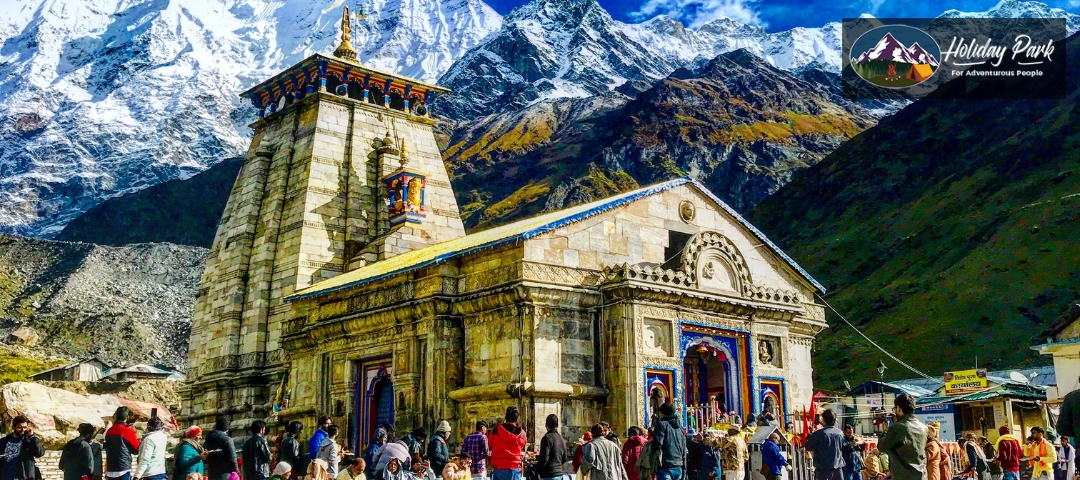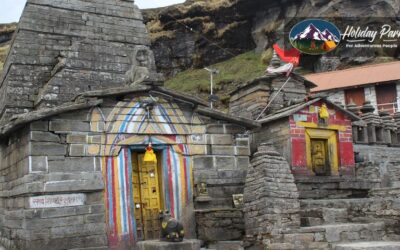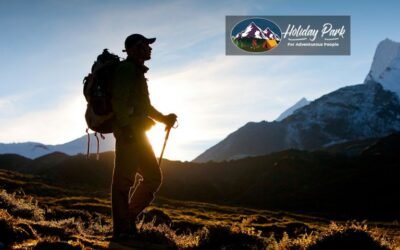Located in the majestic Himalayas of India, Kedarnath is a destination that entices adventure enthusiasts from around the world. The Kedarnath Trek offers a unique blend of spirituality and natural beauty, making it a must-visit for both religious pilgrims and avid trekkers. However, choosing the right season for your Kedarnath Trek is crucial to ensure a safe and enjoyable experience.
In this blog, we have provided a comprehensive guide with valuable tips to assist you in selecting the best season for your Kedarnath Trek. We have covered essential information for each season, including summer, monsoon, autumn, and winter. Whether you are a beginner or an experienced trekker, these tips will help you make an informed decision and plan your adventure accordingly.
When Does Kedarnath Trek Start And End?
The Kedarnath Trek usually begins in late April or early May, depending on the weather conditions. The opening date is determined by the local authorities and the melting of snow in the region. The trekking season extends until November, after which the trails become inaccessible due to heavy snowfall. It is important to note that the exact opening and closing dates may vary each year, so it is advisable to check with local authorities or reliable tour operators for the most up-to-date information.
Now, let’s delve into valuable tips to help you select the best season for Kedarnath Trek.
Kedarnath Trek In Summer (April to June)
The summer season is considered the best time for the Kedarnath Trek, especially for beginners and those seeking a comfortable trekking experience. During this period, the weather is pleasant, with clear skies and moderate temperatures. The average daytime temperatures range from 15 to 20 degrees Celsius, providing a favorable climate for trekking. The trekking trails are easily accessible, and the risk of landslides is relatively low. Moreover, the captivating views of snow-capped peaks, blooming rhododendrons, and lush green meadows make the trek even more rewarding.
Essential Tips For Kedarnath Trekking In Summer Season
1. Stay Hydrated: Carry an adequate amount of water and drink regularly to prevent dehydration. The high altitude and physical exertion can lead to faster water loss.
2. Wear Appropriate Clothing: Opt for lightweight and breathable clothing to stay cool during the trek. Don’t forget to pack sunscreen, sunglasses, and a hat to protect yourself from the sun.
3. Start Early: Begin your trek early in the morning to avoid Kedarnath trekking during the hottest part of the day. This allows you to enjoy cooler temperatures and reduces the risk of heat exhaustion.
Kedarnath Trek in Monsoon (July to September)
Trekking during the monsoon season can be challenging due to heavy rainfall and increased risk factors. The trails become slippery, and there is a higher possibility of landslides. However, if you are an experienced trekker and up for an adventurous journey, the monsoon season offers a unique experience. The landscape comes alive with vibrant flora, including wildflowers and moss-covered trees. You can witness the majestic waterfalls in full flow, creating a picturesque ambience amidst the mist and clouds. It is crucial to be cautious and well-prepared with appropriate rain gear and trekking equipment during this season.
Essential Tips For Kedarnath Trekking In Monsoon Season
1. Check Weather Conditions: Keep a close eye on weather forecasts and local advisories. If heavy rainfall or storms are expected, it’s best to postpone your trek for safety reasons.
2. Use Proper Footwear: Wear sturdy and waterproof trekking shoes with good traction to navigate slippery trails. Carry extra pairs of socks to keep your feet dry.
3. Pack Rain Gear: Bring waterproof jackets, pants, and backpack covers to protect yourself and your belongings from getting wet. Also, use dry bags or plastic bags to keep your essentials dry.
Kedarnath Trek in Autumn (October to November)
Autumn is another favorable season for the Kedarnath Trek. The weather remains pleasant, with clear skies and cooler temperatures. The average daytime temperatures range from 5 to 15 degrees Celsius, providing a comfortable trekking environment. The trails are less crowded compared to the summer season, allowing for a peaceful and serene trekking experience. The surrounding Himalayan peaks adorned with vibrant autumn hues create a breathtaking spectacle. The golden foliage combined with the snow-capped peaks offers a mesmerizing view, making it a favourite season for photography enthusiasts.
Essential Tips for Kedarnath Trekking in Autumn Season
1. Dress in Layers: The weather can change rapidly during autumn, so layering your clothing is essential. Carry a mix of warm and lightweight clothing options to adapt to varying temperatures.
2. Be Prepared for Cold Nights: As temperatures drop significantly during the night, ensure you have a warm sleeping bag, thermal layers, and a good-quality sleeping pad to stay comfortable.
3. Carry Trekking Poles: The trails may become rocky or slippery, so using trekking poles provides stability and support, reducing the strain on your knees and joints.
Kedarnath Trek in Winter (December to March)
The winter season brings heavy snowfall, making the Kedarnath Trek inaccessible for most travellers. The trails are covered in snow, and the extremely cold temperatures make it extremely challenging for trekking. However, if you are an experienced trekker seeking solitude and wish to witness the ethereal beauty of Kedarnath in its snow-clad glory, the winter season can be considered. It requires thorough preparation, including proper winter trekking gear, knowledge of avalanche-prone areas, and experience in extreme weather conditions. Undertaking the Kedarnath trek during this time can be a test of endurance and a unique adventure.
Essential Tips for Kedarnath Trekking in Winter Season
1. Seek Experienced Guidance: Trekking during winter requires advanced skills and experience. It is advisable to hire a local guide or join a guided trek to ensure safety and proper navigation.
2. Dress in Warm Layers: Bundle up in multiple layers of warm clothing, including thermals, fleece jackets, down jackets, and insulated pants. Protect your extremities with gloves, warm socks, and a beanie.
3. Carry Avalanche Safety Gear: In winter, there is a risk of avalanches. Carry essential safety gear such as an avalanche transceiver, shovel, and probe. Additionally, learn basic avalanche awareness and rescue techniques.
General Tips for All Seasons
1. Fitness and Training: Prior to your Kedarnath Trek, engage in regular physical exercise and endurance training to build strength and stamina. Focus on cardiovascular exercises, such as jogging or hiking, to prepare your body for the demands of the trek.
2. Research and Planning: Conduct thorough research about the Kedarnath Trek, including the route, altitude, and potential challenges. Plan your itinerary accordingly, allowing for ample time to acclimatize and rest along the way. Familiarize yourself with the rules and regulations set by the local authorities of Kedarnath.
3. Pack Wisely: Pack essential items while keeping your backpack as light as possible. Carry warm clothing, including layers, a waterproof jacket, and a hat. Don’t forget sturdy and comfortable trekking shoes, sunscreen, a water bottle, a headlamp, a first aid kit, toiletries, and a camera to capture the breathtaking views.
4. Stay Hydrated and Nourished: Drink plenty of water throughout the trek to stay hydrated, even if you don’t feel thirsty. Carry water purification tablets to ensure a safe drinking supply. Pack energy-rich snacks and meals to keep your energy levels up during the trek.
5. Listen to Your Body: Pay attention to any signs of altitude sickness, such as headaches, dizziness, nausea, or shortness of breath. If you experience severe symptoms, descend to a lower altitude and seek medical assistance if needed. Take breaks, rest when necessary, and allow your body to adjust to the changing altitude.
6. Respect Nature and Local Culture: Practice responsible trekking by leaving no trace of your presence. Dispose of waste properly and respect the environment. Observe and adhere to local customs and traditions, showing respect to the local communities you encounter along the way.
7. Trek with a Guide or Group: Consider trekking with an experienced guide or joining a trekking group. They can provide valuable insights, ensure your safety, and enhance your overall Kedarnath trekking experience. Additionally, trekking with others can provide companionship and support throughout the journey.
8. Be Prepared for Changes: Weather conditions can change quickly in the mountains. Pack appropriate gear for rain, snow, wind, or cold temperatures, regardless of the season. Stay updated with weather forecasts, and be prepared to adjust your plans if necessary for safety reasons.
Remember, trekking in the mountains requires careful planning, preparation, and respect for nature. By following these general tips, you can make the most of your Kedarnath Trek and create lifelong memories in this breathtaking Himalayan region.
Conclusion
In conclusion, choosing the best season for your Kedarnath Trek depends on your preferences and tolerance for different weather conditions. Summer and autumn are generally recommended for a comfortable and safe trekking experience. However, if you are an experienced trekker looking for a more challenging adventure or wish to witness the beauty of Kedarnath in its snow-clad glory, the winter season can be considered. Remember to plan and prepare accordingly, ensuring you have the right gear, permits, and a reliable guide to make your Kedarnath Trek a memorable journey.
So get in touch with our customer helpdesk to know more details about our best camping packages in Chopta. Contact us at:
Phone: +91-9758444450
Related Blogs
Tungnath Temple: History, Significance, And Best Time To Visit Tungnath
In the beautiful state of Uttarakhand, Tungnath Temple is India's highest Shiva temple. It stands as one of the holiest shrines dedicated to Lord Shiva. It's not only an ancient architecture but also a place of deep spiritual significance. To help you explore the...
What To Pack For A Chopta-Tungnath Trek : 10 Things To Carry For Trekking
The Chopta-Tungnath trek offers an enchanting experience for nature enthusiasts and adventure seekers alike. When preparing for the Chopta-Tungnath trek, one of the most crucial aspects is meticulously curating your backpack. Deciding on what essentials to pack for...
Chopta Trekking Tips: Your Ultimate Guide To Chopta Chandrashila Trek
The Chopta Chandrashila Trek is situated in Uttrakhand's Garhwal area. If you're looking for a journey that will elevate you, the Chopta Chandrashila Trek is a great option. This amazing journey provides stunning vistas and the chance to scale the formidable...



